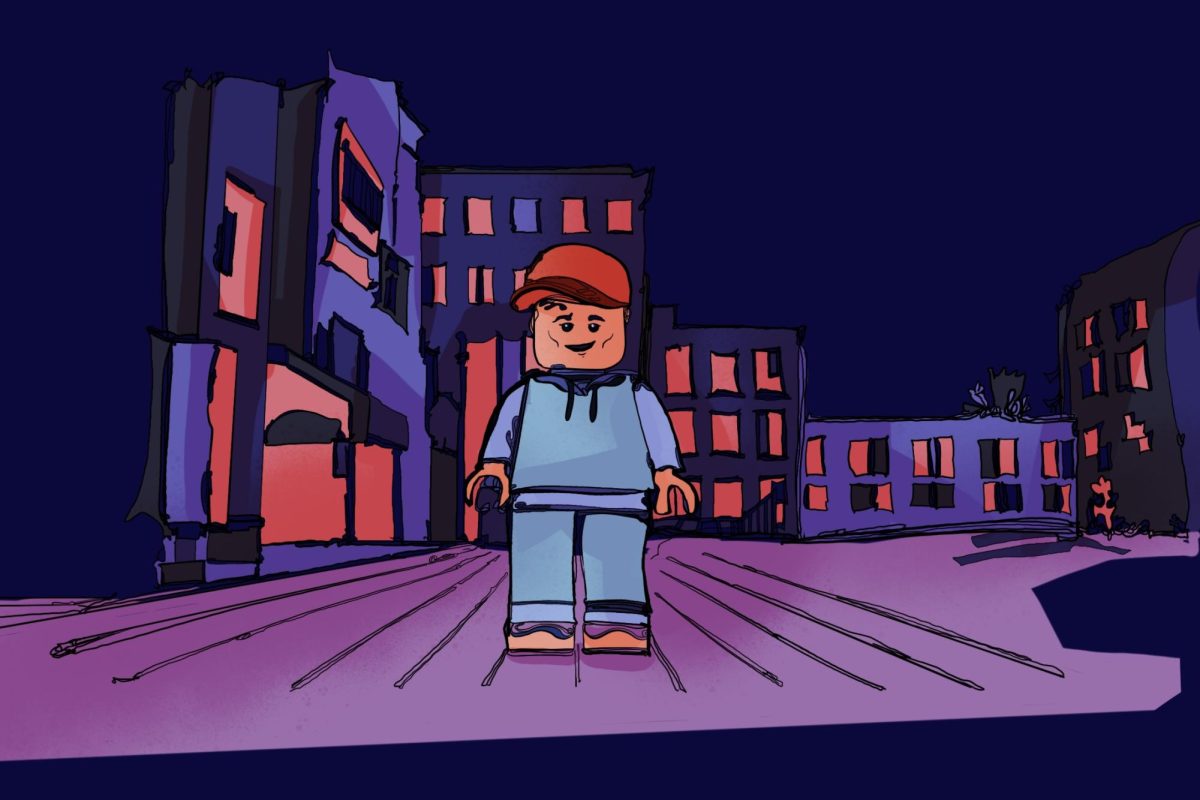Content warning: This review contains mentions of sexual assault.
Award-winning musician Pharrell Williams has produced some of the greatest songs of the 21st century — “Blurred Lines,” “Drop It Like It’s Hot” and “Hollaback Girl” come to mind. Yet many of his younger fans were first introduced to him through “Happy,” a song that, in 2013, became a nauseating radio hit. His autobiographical film “Piece by Piece” caters to these fans, who grew up in the 2000s and 2010s, playing with Legos and listening to “Happy.”
“Piece by Piece” is a clear shift from typical music documentaries — it’s an animated Lego movie targeted toward kids. However, it somehow stays true to the familiar music documentary structure, featuring sit-down interviews with Williams’ peers, behind-the-scenes clips and home videos — but all in animated Lego form. In the film, an animated Lego Williams chats with director Morgan Neville about growing up in Virginia Beach. The story fluidly moves between the present and the past, showing a young Williams navigating being a sonically gifted kid with dreams of making it out of his hometown, but falls flat to older viewers, as it lacks nuance and satisfying animations.
An overlooked aspect of Williams’ career is his synesthesia, a neurological condition that affects his senses, allowing him to associate music with colors. This is illustrated in the film when Williams would open boxes that held musical notes, cleverly assumed to be beatboxes. When placed on a speaker, these boxes released brilliant beams of light, visually representing his synesthesia in a profoundly creative way. However, the Lego animation itself felt a bit clunky and underwhelming.
This missing piece was just the beginning of many throughout the film. The film featured sit-down interviews with some of his collaborators, including Gwen Stefani, Snoop Dogg, Jay-Z and Kendrick Lamar. Some interviews provided valuable insight into working with Williams, while others were cheesy soundbites to seemingly fill the runtime. Notably absent are key collaborators who have been involved in controversy — Robin Thicke, Kanye West and Justin Timberlake. Their exclusion leaves holes in Williams’ story and highlights the film’s commercialized nature. It wasn’t made to show the trials and tribulations of being a cultural icon like Williams; but rather, its purpose is to provide a buttoned-up look at his upbringing and early career.
One of Williams’ biggest hits, “Blurred Lines,” released in 2013, had the potential to derail his career completely, yet it goes unaddressed in the movie. The song has been criticized for trivializing non-consensual sex, objectifying women and reinforcing rape culture. Williams played a significant role, alongside Thicke, in producing the song and co-starred in the music video, which featured model Emily Ratajkowski, who later accused Thicke of sexual assault on set. While Thicke’s omission from the film is warranted, the lack of discourse surrounding Williams’ involvement in the song further underscores his intent to keep the movie family-friendly and commercially acceptable.
Williams also has a strong history of contributing to movie soundtracks, most notably the four “Despicable Me” films — except the “Minions” spinoffs, for some reason — but the songs created specifically for “Piece by Piece” leave the same nauseating aftertaste in your mouth as “Happy” once did over a decade ago. The excessively pop-y sound is no match for Williams’ other hits included in the film. He inadvertently alternated these two eras of his music career throughout the film to illustrate the apparent downward trend of his music’s creativity.
“Piece by Piece” offers a unique — albeit flawed — view into Williams’ music career and eventual evolution into skincare, fashion and other endeavors. The film’s over-commercialization and surface-level approach leaves much to be desired, particularly for those who have enjoyed Williams’ music from his N.E.R.D. days. For some, seeing their favorite artist in Lego form may be sufficient to enjoy the film. Still, for others, it falls short of the profound artistic introspection that Williams is more than capable of.
Contact Chloe Haack at [email protected].






















































































































































